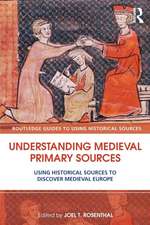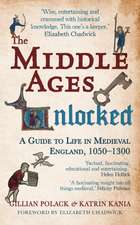The North Transept of Reims Cathedral: Design, Construction, and Visual Programs: AVISTA Studies in the History of Medieval Technology, Science and Art
Editat de Jennifer M. Feltmanen Limba Engleză Hardback – 21 iul 2016
Preț: 878.42 lei
Preț vechi: 1255.19 lei
-30% Nou
Puncte Express: 1318
Preț estimativ în valută:
168.14€ • 182.70$ • 141.33£
168.14€ • 182.70$ • 141.33£
Carte tipărită la comandă
Livrare economică 21 aprilie-05 mai
Preluare comenzi: 021 569.72.76
Specificații
ISBN-13: 9781472462466
ISBN-10: 1472462467
Pagini: 254
Dimensiuni: 156 x 234 x 20 mm
Greutate: 0.61 kg
Ediția:1
Editura: Taylor & Francis
Colecția Routledge
Seria AVISTA Studies in the History of Medieval Technology, Science and Art
Locul publicării:Oxford, United Kingdom
ISBN-10: 1472462467
Pagini: 254
Dimensiuni: 156 x 234 x 20 mm
Greutate: 0.61 kg
Ediția:1
Editura: Taylor & Francis
Colecția Routledge
Seria AVISTA Studies in the History of Medieval Technology, Science and Art
Locul publicării:Oxford, United Kingdom
Cuprins
Introduction, Feltman / Part I Design and Construction: The north portals of Reims Cathedral: the evidence below ground, Berry / Retracing the original north transept of Reims Cathedral, Wu / Changing geometries in the north transept of Reims Cathedral, Bork / The last judgment portal of Reims Cathedral: an archaeological study of its construction, Kasarska / Part II Visual Programs: Royal and clerical iconography and the chronology of the Reims last judgment portal, Feltman / Sculpture, ritual, and episcopal identity in the saints portal at Reims Cathedral, Hansen / Dissent: Satan, Job, Gregory IX, Abou-El-Haj / The north rose of Reims Cathedral: a preliminary archaeological study, Balcon-Berry /Chronological evidence in the north transept stained glass of Reims Cathedral, Parsons Lillich.
Notă biografică
Jennifer M. Feltman is Assistant Professor of Medieval Art and Architecture at The University of Alabama, USA. http://www.jenniferfeltman.com/
Recenzii
"I believe this an essential book for both students and scholars of Gothic art. "
- Gili Shalom, Tel Aviv University
- Gili Shalom, Tel Aviv University
Descriere
This interdisciplinary volume in the AVISTA series is the first book to focus solely on the north transept of Reims Cathedral. Despite the importance of its sculpture and stained glass the north transept remains one of the least understood portions of the cathedral, in part because its sequence of construction is so complex. This volume presents new archaeological evidence of the transept’s substructures alongside studies of the stones above ground, analysis of the geometry used in the transept’s design, iconographic and stylistic studies of its sculpture and glass, and extant medieval documents, which record events bearing upon its construction.




















